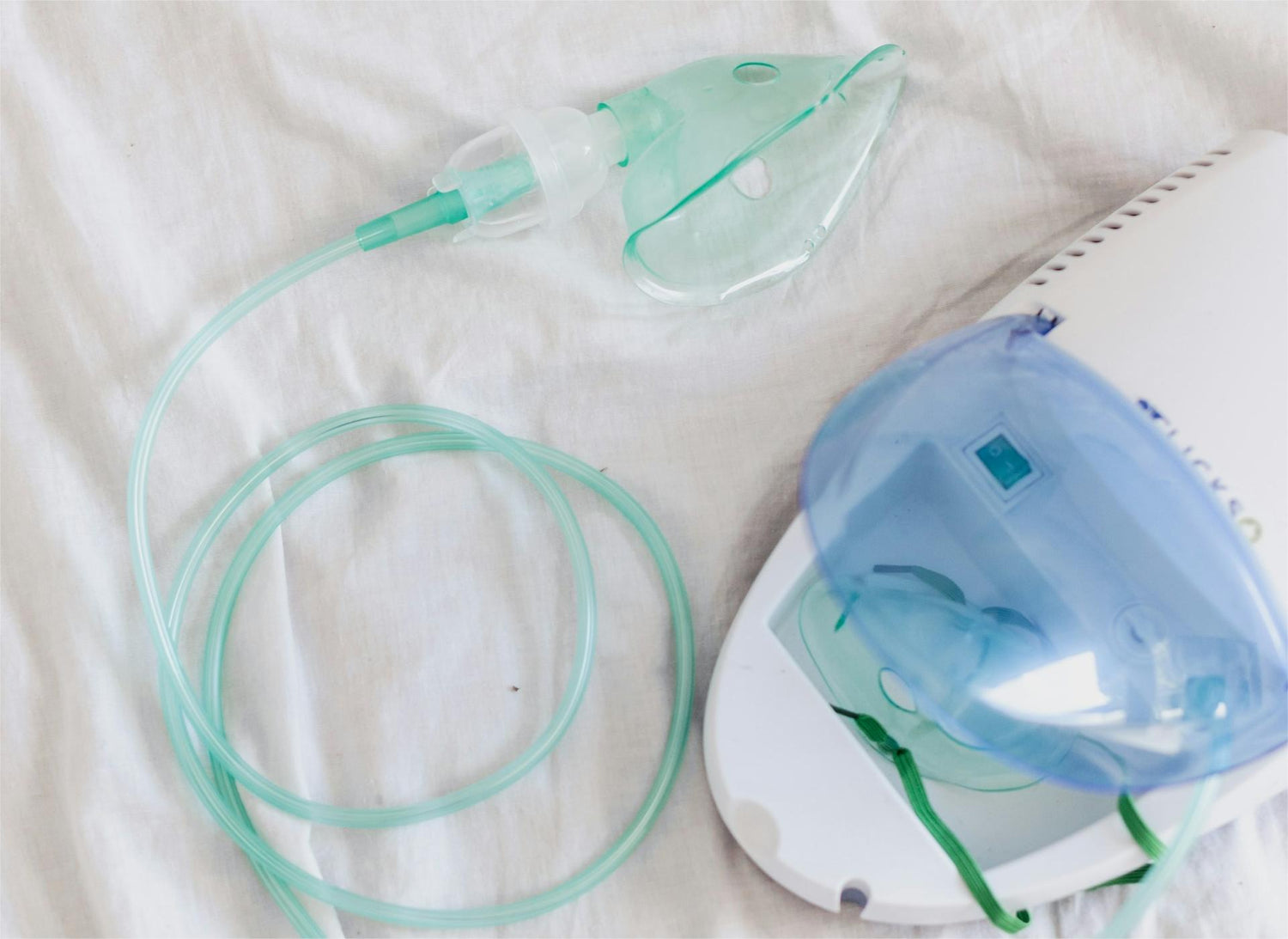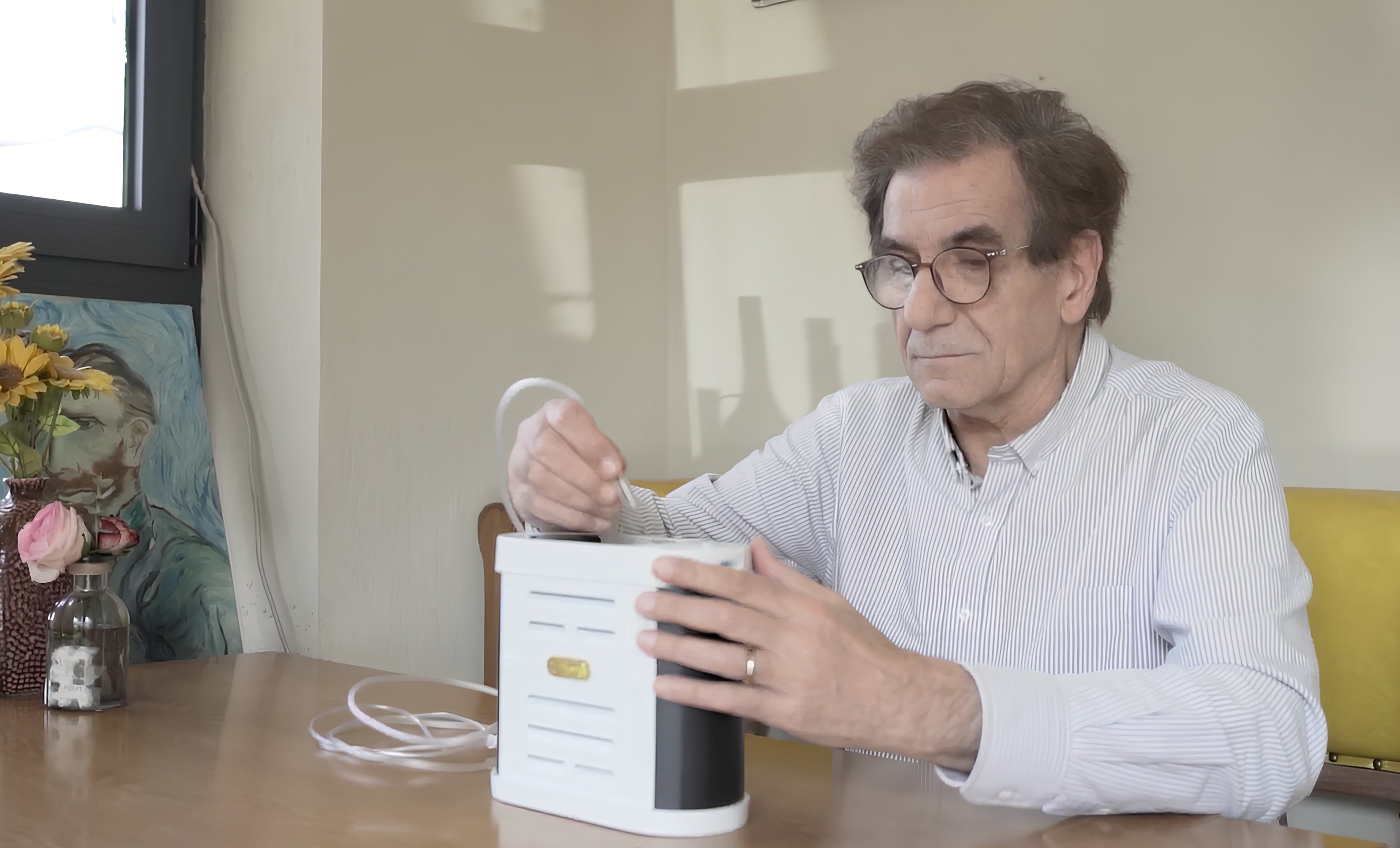Introduction
Oxygen therapy is a crucial treatment for many people who need extra help breathing, but it often comes with an uncomfortable side effect: dry nose and throat. When you're getting oxygen therapy, the air that's pumped in is much drier than what you're used to, because it doesn't have the natural moisture your respiratory system likes. This can leave you feeling like you've got a mini desert in your nose and mouth. It's important to keep things moist because our noses and throats work best that way, especially when relying on oxygen therapy.
In this guide, we'll show you how to tackle this problem head-on, with easy tips and strategies to keep you comfortable while taking in the oxygen your body needs. Let's dive into how you can leave that dryness behind and breathe easier.
Understanding the Causes of Dryness with Oxygen Therapy
When we breathe natural air, its mix of gases includes a comfortable level of humidity that keeps our airways from drying out. Typically, air is composed of roughly 78% nitrogen, 21% oxygen, and the remainder is made up of other gases, including crucial water vapor.
Why Oxygen Therapy Can Be Drying:
- High Oxygen Concentration: Oxygen therapy provides a specific concentration of oxygen which is typically much dryer. It's this high-purity oxygen, devoid of most of the natural humidity found in regular air, that can dry out the nasal and throat linings.
- Removal of Humidity: The process of concentrating oxygen often involves removing components like nitrogen and water vapor, which are essential for maintaining the moisture balance in our respiratory system.
The Difference Between Hospital and Home Oxygen Systems:
- Hospital Systems: To address this, hospitals use humidifiers to add moisture back into the oxygen supply before it's delivered to patients. This helps mimic the humidity found in natural air as closely as possible.
- Home Oxygen Devices: In contrast, home oxygen systems, such as oxygen concentrators or tanks, typically don't include these sophisticated humidification mechanisms, leading to greater dryness for users unless an additional humidifier is attached.

The Role of Environmental Factors:
- Climate and Indoor Heating:Your surroundings also affect the moisture content in your airways. Dry climates or heated indoor environments can exacerbate the dryness caused by oxygen therapy, increasing discomfort.
Understanding that oxygen therapy's inherent lack of moisture, compounded by environmental factors, can cause dryness, sets the stage for taking effective measures against it. By exploring the strategies in the upcoming sections, you'll find practical ways to alleviate immediate dryness and maintain healthy, moist airways for the long haul. With some tweaks and proactive care, you can help ensure that every breath with oxygen therapy feels as refreshing as a gentle spring breeze.
Quick Fixes for Dryness from Oxygen Therapy
Saline Sprays: Your Nose's Best Friend
Think of saline nasal sprays as a refreshing mist for your nostrils. Just like watering a thirsty plant, these sprays help add some much-needed moisture to the inside of your nose. You can find them at any drugstore, and they're super easy to use-just a quick spritz as often as you need.
Soothe Your Throat on the Go
For that scratchy throat feeling, picture throat lozenges and sprays as mini superheroes in your pocket. They coat your throat with goodies that make it feel less like sandpaper and more like its smooth old self. Glycerin, honey, or aloe are often in these products, working to give you temporary relief so you can keep on talking and swallowing without wincing.
Drink Up to Stay Moist
Drinking fluids is key-think of water as your body's favorite lubricant. It keeps everything running smoothly, including the mucus in your nose and throat. So aim to drink plenty of fluids every day. If plain water sounds boring, jazz things up with herbal tea or a slice of lemon in your drink.

Getting Comfy with Your Oxygen Gear
If your oxygen mask or cannula feels like it's trying to blow your head off, don't worry, there's usually a way to adjust it. These come in different sizes and finding the right fit can really make a difference. A well-fitting mask or cannula shouldn't feel like a wind tunnel-it should be comfortable and not too direct on your nose.
These quick tips are here to offer you some instant comfort from the dryness caused by oxygen therapy. But remember, they're just the start. If you want to play the long game and keep dryness away, stick around for our next section on long-term strategies. We're all about making sure you can use your oxygen without the constant prickly feeling of dryness. Let's turn that temporary relief into something more lasting!

How to Keep Your Airways Moist During Oxygen Therapy
Humidify Your Oxygen Supply
First, there are special humidifiers you can attach directly to your oxygen machine. They're like little rainmakers for your oxygen stream, providing moisture so every breath feels less harsh and more like natural air. Make sure to keep these clean as per the instructions, so they work their best at keeping your airways happy.
Warm Up Your Air with Heated Tubing
Heated tubing works like a warm blanket for the air coming through your oxygen tube. It prevents the oxygen from losing moisture on its way to you, helping you avoid breathing in dry air that can irritate your nose and throat. If you're tired of feeling dried out, ask about getting heated tubing for your oxygen setup.
Choose the Right Mask
Not every mask will feel good on your face or keep enough moisture in. Some masks have soft cushions or gel pads that help keep the air moist and comfortable. If your current mask is leaving you dry, it might be time to try a different type that better suits your needs.
Eat and Drink for Hydration
Remember, drinking water is great, but eating foods that are full of water helps too. Enjoy fruits and veggies like cucumbers and melons-they're tasty and hydrating. Be careful with coffee and alcohol, though; they can pull water out of your system and leave you feeling dryer.
Control Humidity at Home
A room humidifier can be a great ally, especially if you live where it's dry or use heaters and air conditioners that sap moisture from the air. It keeps your living space comfortable and moist, which is just what your respiratory system needs.
Practice Breathing Exercises
Breathing exercises aren't just for relaxation-they also help your body do a better job of moisturizing your airways. Try breathing deeply into your belly rather than just your chest. This isn't just good for your lungs; it helps keep the mucus membranes in your nose and throat moist.
By adopting these habits, you're doing more than just easing symptoms-you're creating an environment and lifestyle that supports your respiratory health while on oxygen therapy. Up next, we'll talk about how to know when it's time to get some extra help from medical pros and how to safely tweak your oxygen therapy.
When to Consult a Doctor
Having covered the ways to manage dryness on your own, let's talk about when you need a helping hand from a healthcare pro. Sometimes, despite all your efforts, that dry feeling just won't budge-it's stubborn and needs more than home remedies.
Signs That Indicate a Need for Medical Advice:
If you notice any of the following, it could be time to have a chat with your healthcare provider:
- Nosebleeds that just won't quit.
- Persistent sore or dry throat that feels like you swallowed a cactus.
- Cracking in the nasal passages or soreness that feels more like a chapped lip.
- Signs of infection, such as fever, increased mucus production, or mucus that's changed color.
- Any new respiratory symptoms, like wheezing or shortness of breath.
These symptoms could mean that your dry nose and throat are more than just an annoyance-they could be signs that your body isn't getting along well with your current oxygen setup.
Easy Tips for Personal Care During Oxygen Therapy
Proper hygiene can make a big difference in how you feel while using oxygen therapy. Let's break down each step into greater detail to keep dryness away:
Keep It Clean, Keep It Simple:
- Use a soft, microfiber cloth that's gentle on the skin.
- Opt for lukewarm water which is soothing and effective for cleaning.
- Avoid alcohol-based wipes or astringents that can increase dryness.
- Pat (don't rub) the area dry after cleansing to minimize irritation.
Moisturizing Matters:
- Choose moisturizers labeled "hypoallergenic" or "for sensitive skin" to avoid reactions.
- Apply the moisturizer right after cleaning to lock in moisture.
- For inside your nose, use a clean cotton swab to apply oil; do not insert it too far.
Don't Neglect Oral Care:
- Use a soft-bristled toothbrush to be gentle on your gums.
- Toothpaste for dry mouth can help maintain moisture levels.
- Floss gently to avoid causing cuts that could get infected.
- An alcohol-free mouthwash will cleanse without contributing to dryness.
Oxygen Equipment Upkeep:
- Disinfect cannulas and masks with solutions recommended by the healthcare provider.
- Replace disposable items like cannulas according to the suggested timeline.
- Inspect humidifier tanks for signs of mold or mineral deposits and clean them as needed.
Adjust Your Room's Humidity:
- Use a hygrometer to monitor your room's humidity level; aim for 30-50%.
- Clean your humidifier with vinegar and rinse thoroughly to remove any buildup.
- Change the water in your humidifier daily to keep it fresh and clean.
- Position your humidifier correctly in the room for optimal moisture distribution.

By focusing on these detailed steps, you can improve your overall comfort during oxygen therapy. Remember, taking care of yourself includes maintaining your equipment and personal hygiene to help prevent the discomfort from dryness.
Final Thoughts: Breathe Easy with Simple Care Strategies
Taking care of your nose and throat while on oxygen therapy doesn't have to be complicated. Remember to clean gently, keep the moisture locked in, and stay on top of both your oral hygiene and equipment cleanliness. Also, balancing the humidity in your home can make a world of difference for your comfort. With these straightforward steps, you can tackle dryness and make your experience with oxygen therapy much more pleasant-allowing you to focus on the things that matter most in life.





Commenta
Questo sito è protetto da hCaptcha e applica le Norme sulla privacy e i Termini di servizio di hCaptcha.